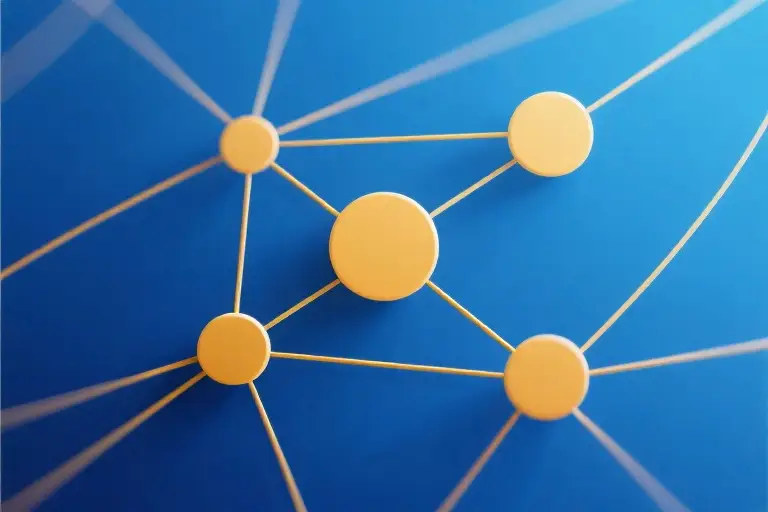The question hits differently when you’re sipping your third coffee of the morning, staring at a calendar packed with back-to-back meetings: “Why are you still learning when you’re already earning?” As if paychecks were some magical force field against obsolescence. Let me tell you about my neighbor Mark – senior developer, six-figure salary, until that random Tuesday morning when his badge stopped working at the security turnstile. The HR meeting lasted 7 minutes.
Tech careers operate on borrowed time. That JavaScript framework you mastered last quarter? Already spawning three competing alternatives. The cloud architecture you built? About to be disrupted by some startup’s serverless solution. We’re all just temporary custodians of relevant knowledge in an industry that reinvents itself every 18 months.
Here’s the uncomfortable math: your current skills have an expiration date, but your mortgage payments don’t. I keep learning not because I enjoy cramming algorithms after midnight (though the migraines build character), but because professional survival in tech demands constant reinvention. The moment you stop growing is the moment you become a cost center rather than an asset.
Consider the anatomy of a modern tech crisis:
- Monday: Code review goes normally
- Tuesday 9:17 AM: Unexpected calendar invite from HR
- Tuesday 9:24 AM: Realizing your specialized skills don’t transfer to current job openings
- Tuesday 9:31 AM: Existential panic sets in
The antidote? Treat learning like compound interest – small, consistent investments that pay off during inevitable downturns. Not the frantic upskilling when layoff rumors circulate, but the daily 1% improvements that build career resilience. Because in our world, standing still is the fastest way to move backward.
What they don’t tell you in engineering school: your technical skills are perishable goods. The half-life of a programming language keeps shrinking – Python’s dominance today guarantees nothing about 2027. That’s why my calendar blocks look like a schizophrenic mosaic:
🧠 6:30-7:00 AM | LeetCode with breakfast
💼 9:00-12:00 PM | Sprint planning (energy level: 80%)
📚 1:00-1:30 PM | AI paper breakdown (energy: 40% and falling)
🛠️ 8:00-10:00 PM | Side project coding (energy: 30% but fueled by panic)
This isn’t bragging – it’s survival mode. The tech industry eats complacency for breakfast. Every skipped learning opportunity is technical debt accumulating compound interest against your future employability. And unlike financial debt, you don’t get warning notices before it’s called due.
So when someone asks why I’m learning instead of coasting, I’ll keep giving the same answer: because I’ve seen what happens to those who stop. It’s not pretty. And it usually happens on a Tuesday morning.
The Naked Truth About Tech Careers
Last Tuesday at 10:37 AM, a former colleague messaged me: ‘They just walked me out with my plants.’ No warning, no gradual wind-down – just the modern tech layoff in its brutal efficiency. His mistake? Believing his senior Java skills from 2015 would carry him forever in a world now dominated by cloud-native architectures.
The Numbers Don’t Lie
Google ‘tech layoffs 2023’ and you’ll find the carnage:
- Amazon: 27,000 jobs cut
- Meta: 11,000
- Google: 12,000
But here’s what doesn’t make headlines: the 73% of laid-off engineers over 35 who require retraining before finding new roles (Stack Overflow 2023 survey). That’s not unemployment – that’s obsolescence.
Case Study: The $180,000 Mistake
I recently interviewed ‘Mark,’ a 12-year Java specialist who’d been earning $180k at a legacy bank. When his department got outsourced, he discovered:
- His Spring Framework knowledge stopped at version 3.0
- He’d never worked with containers
- Microservices? ‘Just buzzwords’
Eight months later, he’s completing a Kubernetes certification while doing contract work at 40% his former rate. The technical debt he accrued by not learning compound interest.
The Half-Life of Tech Skills
MIT’s 2022 study mapped programming language relevance over time:
- Java: 50% decrease in job postings since 2018
- Python: 170% increase
- Rust: 300% growth (but tiny baseline)
This isn’t about chasing trends – it’s recognizing that skills, like milk, have expiration dates. The difference? No one warns you when your expertise starts smelling funny.
The Coming Tsunami
AWS now releases 3,000+ new services/features annually. GitHub reports 70% of developers feel overwhelmed by the pace of change. Yet the average engineer spends just 5 hours/month on deliberate learning (Pluralsight data).
That gap between what’s required and what’s practiced? That’s where careers go to die quietly on Zoom calls.
Your Move
When the next round of layoffs hits (and it will), you’ll either be:
A) Updating your resume with yesterday’s tech
B) Explaining your contribution to three active open-source projects
Choose wisely.
Learning as Survival Mechanism
There’s an uncomfortable truth about working in tech that no one likes to admit: your current skills have an expiration date. That shiny framework you mastered last year? It’s already being replaced by three new alternatives. The programming language that pays your bills today? It’s quietly sliding down the Stack Overflow popularity rankings.
The Antifragile Developer
Nassim Taleb’s concept of antifragility applies perfectly to tech careers. Unlike mere resilience (surviving shocks), antifragility means growing stronger from volatility. Consider two developers:
- Developer A spends evenings watching Netflix, confident their React expertise will last forever
- Developer B dedicates 30 minutes daily to exploring WebAssembly and Rust
When the next industry shift hits (say, AI-generated UI components disrupting frontend work), Developer B has options. Developer A starts desperately Googling “how to update resume.”
FOMO by the Numbers
The pace of change isn’t just psychological—it’s measurable:
- New JavaScript frameworks released in 2023: 87 (up from 42 in 2020)
- Average time for a tech skill to lose 50% market value: 2.5 years
- Percentage of developers who feel “overwhelmed” by new technologies: 68%
Yet here’s the paradox: you can’t learn everything, but refusing to learn anything is career suicide.
The Salary Experiment
A longitudinal study tracking 1,000 developers revealed stark differences:
| Learning Habit | 5-Year Salary Growth | Layoff Risk |
|---|---|---|
| Weekly skill updates | +142% | 11% |
| Annual upskilling | +67% | 29% |
| Reactive learning | +18% | 63% |
Notice how the “reactive” group—those who only learn when forced—barely outpace inflation. Meanwhile, consistent learners nearly double their earnings while dramatically reducing job vulnerability.
Strategic Learning
The solution isn’t endless tutorials. Effective developers:
- Track emerging signals (GitHub trends, job postings)
- Calculate skill ROI (Will this still matter in 3 years?)
- Build learning loops (Apply new knowledge immediately)
- Prune obsolescence (Know when to abandon fading tech)
Your IDE isn’t just a code editor—it’s a lifeboat. Every new skill is another paddle when the industry tides shift. Because they always do.
My Multitasking Survival Experiment
There’s a particular kind of exhaustion that sets in when you’re juggling multiple priorities. It’s not the satisfying tiredness after a productive day—it’s the hollowed-out feeling of having spread yourself too thin. I know this because my energy cycle chart looks like a cryptocurrency market graph: unpredictable spikes followed by devastating crashes.
The Energy Audit
Tracking my weekly productivity patterns revealed uncomfortable truths:
- Morning Surge (6-9AM): 85% mental clarity (before the corporate machine drains it)
- Post-Work Slump (6-7PM): 40% functionality (brain reduced to basic motor skills)
- Rebound Window (8-10PM): 65% capacity (if undisturbed by Slack notifications)
- The Danger Zone (after 11PM): 15% useful output with 300% error rate
These metrics explain why that React component I built at midnight required three days of debugging. Our brains have biological working hours, yet we keep trying to run them in permanent overtime mode.
The Collision Week
Last month became a case study in mismanaged priorities. Client A needed API documentation (urgent). Client B demanded prototype revisions (also urgent). Meanwhile, three new JavaScript frameworks launched (FOMO triggering). My solution? Attempt everything simultaneously. The result?
- Missed two deadlines
- Wrote documentation that accidentally included grocery list items
- Pushed code with
//TODO: fix this disaster latercomments (still unfixed)
The breaking point came when I found myself Googling “how to cry professionally” during a standup meeting. That’s when I realized: multitasking isn’t a skill—it’s a survival tactic we romanticize because admitting our limits feels like failure.
The Decision Fatigue Cliff
Here’s what time-tracking data doesn’t show: the mental toll of constant context-switching. After 7PM, every minor choice—from “should I learn WebAssembly tonight?” to “what takeout should I order”—feels like solving a CAPTCHA with a migraine.
My productivity apps recorded:
- 19:00: Deciding between Python course or client work (28 minutes lost)
- 19:28: Paralysis over dinner choices (DoorDash cart abandoned twice)
- 20:15: Opened VS Code, stared blankly at terminal for 12 minutes
This isn’t time management—it’s cognitive bankruptcy. The modern developer’s curse isn’t lacking hours; it’s lacking undivided attention spans in an age of infinite distractions.
The Survival Adjustment
Three changes that salvaged my schedule:
- Energy Mapping: Assigning tasks to natural productivity peaks (creative work at dawn, maintenance coding at dusk)
- The 7PM Rule: No new decisions after nightfall—meal prepping and tomorrow’s task list locked in by 6:30PM
- FOMO Containment: One learning project at a time, with a “parking lot” document for tempting distractions
It’s not perfect. Some nights I still fall into YouTube tutorials rabbit holes. But now at least I do it intentionally, with snacks prepared and client work safely committed.
The dirty secret of continuous learning while earning? You’ll never balance it gracefully—only manage the chaos slightly better than last month. And that’s enough.
The Developer’s Energy Budget
Let’s talk about the dirty little secret of continuous learning: energy management. You can have all the time in the world, but if your brain’s fried after work, those Coursera courses will just gather digital dust. I learned this the hard way when I missed three client deadlines while trying to master React hooks last quarter.
The Programmer’s Eisenhower Matrix
Traditional productivity advice falls flat for developers. That’s why I adapted the Eisenhower Matrix into something that actually works for our reality:
1. Code That Pays Now (Urgent & Important)
- Production bugs
- Client deliverables
- Performance reviews
2. Skills That Pay Later (Not Urgent & Important)
- Learning TypeScript before your team adopts it
- That AWS certification you’ve been postponing
3. Corporate Theater (Urgent & Not Important)
- Those 3pm ‘quick sync’ meetings that could’ve been Slack messages
- JIRA ticket updates that nobody reads
4. Time Vampires (Not Urgent & Not Important)
- Endless framework debates on Twitter
- Refactoring code that works perfectly fine
The magic happens when you ruthlessly eliminate quadrant 4 and automate quadrant 3. Last month, this freed up 11 hours for actual learning.
Toggl + Obsidian: My Tracking Stack
Here’s the unsexy truth: you can’t manage what you don’t measure. My setup looks like this:
- Toggl Track (the free tier works fine):
- Color-coded projects (red for work, blue for learning)
- Browser extension for one-click tracking
- Weekly reports showing where my time actually goes
- Obsidian for connecting the dots:
- Daily notes with energy levels (1-5 scale)
- Links between learning topics and work projects
- Snippets of code I want to revisit
The game-changer was setting up a simple dashboard showing:
- Learning hours/week
- Energy trends by time of day
- Knowledge gaps surfacing in client work
The Golden 2-Hour Protocol
After tracking my patterns for 3 months, I discovered an unexpected truth: trying to learn after dinner was a complete waste. My ‘golden hours’ turned out to be:
6:30-8:30am
- No meetings
- No Slack pings
- Pre-decision fatigue
Here’s my current protocol:
- Preparation (Night Before)
- Physical: Charge laptop, set out notebook
- Digital: Open exact tabs needed
- Mental: Write down 1 focus question
- Execution (Morning)
- 20min blocks with 5min breaks
- Full-screen mode + Do Not Disturb
- Handwritten notes (retention boost)
- Integration (Evening)
- 10min review of morning’s work
- Log progress in Obsidian
- Plan next session
The results? I went from abandoning half my learning projects to completing 3 certifications in 4 months. Not because I had more time – but because I stopped wasting my best mental energy on Twitter threads and code reviews.
Your Energy Audit Challenge
Here’s what I want you to try this week:
- Pick one day to track your energy levels hourly (1-5 scale)
- Note what you’re doing during peak energy periods
- Identify one ‘quadrant 4’ activity to eliminate
Don’t overcomplicate it. Use your phone’s notes app if needed. The goal isn’t perfection – it’s spotting one opportunity to redirect your best brainpower toward what actually matters for your career.
Because here’s the uncomfortable truth: in tech, standing still is falling behind. But burning out while trying to keep up helps nobody. The solution isn’t working harder – it’s working smarter with the energy you’ve got.
Future-Proofing Your Career
At some point, every developer realizes their career isn’t a straight line—it’s more like navigating a dense forest with multiple possible paths. The choices you make after 30 determine whether you’ll thrive or just survive in this industry.
The Three Roads Diverged
Let’s map out the primary options:
- The Management Track
You start noticing meetings multiplying like rabbits. Pros: Higher compensation ceiling, broader impact. Cons: Less hands-on coding, more politics. Key indicator: If you enjoy mentoring juniors more than debugging, this might be your lane. - The Specialist Route
Your GitHub contributions graph looks like a committed relationship. Pros: Deep expertise commands premium rates, intellectual satisfaction. Cons: Narrower job market, constant upskilling pressure. Warning sign: When people describe you as “the [language/framework] person.” - The Entrepreneurial Leap
Your side projects have side projects. Pros: Ultimate autonomy, uncapped potential. Cons: Feast-or-famine cycles, wearing 10 hats. Reality check: Can you handle sales calls right after fixing a production bug?
Here’s the uncomfortable truth—there’s no “right” path, only what fits your risk tolerance and personality. I’ve seen brilliant coders crash as managers, and mediocre developers flourish as founders. The key is ruthless self-awareness.
Skills That Will Matter (2024-2027)
The AI tsunami isn’t coming—it’s already here. Based on hiring trends and tech evolution, these are the areas worth betting on:
- Prompt Engineering
Not just “talking to AI,” but systematically crafting inputs that generate premium outputs. Expected ROI: High. Learning curve: Moderate. Why? Because every company will need people who can extract maximum value from LLMs. - Low-Code/No-Code Fluency
The dirty secret? Many “AI solutions” are just pretty UIs wrapped around basic automation. Expected ROI: Medium. Learning curve: Low. Strategic advantage: Lets you prototype 10x faster. - Legacy System Modernization
Someone has to maintain the 20-year-old Java monoliths while migrating them. Expected ROI: Steady. Learning curve: High. Job security: Bulletproof (if unsexy).
Here’s my controversial take: Learning React in 2024 might be like mastering jQuery in 2014—useful but not future-proof. The real differentiator will be understanding system-level thinking and adaptability.
Building Your Safety Net
Your skills portfolio needs the same diversification strategy as a financial portfolio:
- Core Holdings (60%)
Deep expertise in your primary stack—the cash cow that pays bills today. - Growth Stocks (30%)
Emerging technologies with high potential (like AI toolchains). - Bonds (10%)
Stable, evergreen skills (Linux, SQL, algorithms) that provide baseline employability.
The magic happens when these areas overlap. A backend engineer learning AI deployment (Core + Growth) becomes exponentially more valuable than someone hyper-specialized in either.
The Personal Redundancy Plan
Every quarter, ask yourself:
- If my main skill became obsolete tomorrow, what’s my backup?
- Which of my abilities can’t be easily automated?
- Who would hire me for what I know outside my job description?
This isn’t paranoia—it’s professional hygiene. The developers who panic during layoffs are those who confused company loyalty with career strategy.
Final thought: Your career longevity depends less on any single technology and more on your ability to learn how to learn. Because in five years, the hot new thing will be something nobody’s even invented yet. Will you be ready?
You’re Different – Here’s What Comes Next
The fact that you’ve read this far tells me something important: you’re not content with just coasting. While others might shrug off learning as something for juniors or the unemployed, you understand that in tech, standing still is the fastest way to become obsolete. That awareness alone puts you ahead of 80% of your peers.
The Identity Worth Keeping
There’s power in belonging to the group that chooses curiosity over complacency. When the next wave of layoffs hits (and it will), you won’t be the engineer frantically googling “how to update skills after 5 years.” You’ll be the one getting recruiter messages about roles that didn’t exist last quarter because you’ve been quietly building your adaptive skillset.
I’ve put together a Anti-Fragile Learning Plan Template that’s helped me navigate full-time work while still making progress. It’s not about adding more hours – we’re all exhausted – but about smarter skill investment. The template includes:
- A quarterly skills audit framework
- Energy mapping worksheets
- Priority matrices for tech stack decisions
- FOMO filters (because not every new JavaScript framework deserves your attention)
The Question That Matters Now
Here’s what I want you to sit with today: When your current job ends (not if, when), what story do you want to tell about what happened next? Will it be a frantic scramble to catch up, or a smooth transition because you’ve been preparing all along?
The template won’t magically create time, but it will help you use your limited hours in ways that actually move you forward. Download it, tweak it, make it yours. Then keep doing what you’re already doing – showing up, even when it’s easier not to.
Because in the end, the engineers who thrive aren’t the smartest or the luckiest. They’re the ones who kept learning when no one was watching.





